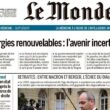The UK-based B2B information group Euromoney Plc was a standout victim of the Coronavirus this week as it reported the cancellation of 25 events and the postponement of at least 64 others. The lost conferences, seminars and exhibitions will slice at least £5m off this year’s operating profit. But there may be worse to come.
Euromoney is freezing recruitment and salaries, and inviting staffers to apply for unpaid leave, shorter working times, and voluntary redundancy. The moves underline how fundamentally the virus may change media companies which will be suffering, first, from restrictions on travel and events and, then, from the damage done to clients and the world economy.
The company’s share price has lost 18% so far this week and is now 60% below its 52-week high. Its market cap is £950m, 50% of the peak value. These are bloody times for an ambitious B2B group some 51 years after the ground-breaking Euromoney magazine was launched by the UK’s Daily Mail Group. The newspaper’s finance editor Patrick Sergeant had predicted the expansion of international banking as a result of the UK’s relaxed foreign exchange regulations. Euromoney quickly became the leading magazine of the booming financial markets.
The £6,200 of capital invested in the monthly magazine (£6k from the Daily Mail and £200 from Sergeant himself) created a UK listed business, self-described as a provider of “critical data, price reporting, insight, analysis and must-attend events to financial services, commodities, telecoms and legal markets.” Its key brands now include: Euromoney, Institutional Investor, BCA Research, Ned Davis Research, Metal Bulletin, American Metal Market, Insurance Insider, IJ Global, BoardEx, and The Deal.
Euromoney’s growth helped to transform the UK’s Daily Mail (DMGT) into a vibrant all-media group. Euromoney Plc built a formidable reputation in B2B media through its ability to crank out long-term profit growth from diversification into conferences, tight cost control, and adventurous M&A. It was also very good at selling high-priced advertorials in its prestige publications – decades before “content marketing” became commonplace.
Euromoney also became known for its super-generous pay for senior executives. The annual remuneration of the chairman and CEO was millions of pounds as a result of a “secret” bonus scheme paying 1% of profits and 5% of profit growth. This lucrative scheme was also shared with a slice of middle management, as was the Capital Appreciation Plan, a five-year scheme, based on getting the company’s profits to £100m. It paid out over three years and enriched executives, some of whom played tricks with M&A to ensure lucrative bonuses. This was a company whose cash-generation thrilled its management (and its majority shareholder) for decades. It didn’t seem like a public company at all.
Last year’s 50th anniversary brought big change. DMGT cashed in its majority stake and Euromoney became an independent company for the first time, even though it had long been listed on the London stock exchange.
Although CEO Andrew Rashbass (ex Reuters and The Economist) does not enjoy his predecessor’s pay deal, he has relished the company’s new-found independence, at least until now. He has regaled investors with his “B2B Information 3.0” strategy which commits Euromoney to providing vital workflow tools for clients – as opposed to “flat” magazine-like services in print and digital.
His strategy highlights expansion of the Price Reporting Agencies (PRAs) first acquired with Metal Bulletin all of 14 years ago and augmented through more recent deals to cover metals, mining, and forest products. This was reflected in the 2018-19 results which showed total revenue of £401.7m (+3%), operating profit of £104.6m, an operating margin of 26% and 98% cash conversion. A solid performance in a year of churn.
The “pricing, data and market intelligence” segment, which accounts for 48% of group profit, was the star performer with 4% revenue growth. This week, the company paid an estimated £5m to acquire the two-year-old PRAs AgriCensus and EnergyCensus, in the UK, which have revenue of some £2m.
B2B media companies often talk grandly about “must have” information, a neat phrase which is less precise than it sounds. The more important emphasis should be on “proprietary” information, high-value, exclusive data. Nowhere is this clearer than in PRAs because they are the “official” prices which govern trading in the world’s commodity markets. They are the exclusive information sources which facilitate transactions and also help to provide serious revenues from consulting and research. In many ways, Metal Bulletin (acquired by Euromoney for £200m in 2006) had been a PRA pioneer.
The PRA division of Euromoney Plc (now known as FastMarkets MB) began life in 1913 as a spin-off from The Ironmonger magazine, to service the global markets using the London Metal Exchange (LME) for price discovery.
Fast forward a century and the £200m-revenue, UK-based Argus Media owns many of the pricing indices across energy, metals, petrochemicals and coal. It’s the second largest of the PRA groups after the $800m-revenue petrochemical and energy specialist Platts (a 13% slice of ratings giant S&P Global).
Argus, which is majority owned by General Atlantic and HG private equity firms, last year reported EBITDA of £61.9m (2017: £45.9m) on revenue of £182.2m (£127.3m). The 85% of recurring revenue endorses the company’s original strategy to invest in proprietary information.
That’s why Rashbass is on the right track and should now tirelessly seek to acquire one of the best PRA independents, the privately-owned CRU Group (formerly Commodities Research Unit). CRU last year grew revenue by 15% to £40.5m, with EBITDA of £5.2m. The privately-owned, London-based company has PRAs across mining, metals and fertilisers. Its business is fairly evenly spread across the world.
It is believed Euromoney and CRU have had abortive discussions in the past. The two companies would be a good fit. Perhaps the trigger now could be the fact that, having both tendered for an LME aluminium price contract, they were awarded it jointly. Euromoney and CRU are working together for the first time.
But, before then, Euromoney may be forced to defer its decision to sell its Asset Management division. Although this largely North American portfolio is in decline, it still accounts for 36% of Euromoney’s revenue, 43% of its profit, has the company’s largest proportion of subscriptions, and its highest operating profit margin.
Unsurprisingly, Euromoney becomes just the latest company to realise that selling high-margin, low-growth business is a thankless task – other than dilutively. The fact that this ex-growth division of Euromoney has actually grown its profit margins in the past year is further warning that most of the cost-savings have already been banked. That, presumably, is another reason why no sale has been achieved after almost six months of cajoling by Goldman Sachs.
The challenge has been made greater by the fact that the Asset Management division is really three quite separate businesses: the BCA and NED Davis research companies, whose revenues have been shredded by EU legislation designed to ensure that research is priced separately and not used as an inducement to investors; and Institutional Investor (II) the one-time US-based magazine-centric competitor with Euromoney itself. But behind II is the reason this whole Euromoney division actually accounts for almost 50% of Euromoney’s total subscriptions revenue: Its Memberships and Forums operation attracts an incomparable who’s-who of financial thought leaders to more than 100 annual events throughout the world.
This uniquely successful, commercial network of 600 senior executives each pay anything up to $50k a year to join elite ‘clubs’ and attend exclusive meetings with their peers. It’s a remarkable business built up over the past few decades which has survived the sell-off of the magazines, events and information services with which it once shared the Institutional Investor branding.
It is difficult to understand why this II memberships business – a real role model for business and professional networks everywhere – is being bundled for sale with the research companies with which it (or its prospective buyers) may have so little in common.
That little debate may now be academic. It has, of course, become the worst time to sell a challenged business. But the Corona economy presents Andrew Rashbass with the opportunity for write-downs, not-so-subtle changes in strategy, and bargain-basement sell-offs of unwanted business. He might, therefore, plan to:
- Group together most of the company’s events in order to maximise profit – and sell at a later date. “Focus on information, quit events”.
- Separate the II memberships business from the research companies, each of which would eventually be sold
- Acquire CRU for something like £150m (yes, some 25 x EBITDA). An irresisible price for the relaxed vendor of a cash-rich company, but which could pay-off handsomely for Euromoney
- Prepare also to divest the Investment Banking division including Euromoney itself whose performance has only been slightly better than Asset Management.
Even before those tricky divestments, the CRU acquisition would give the debt-free Euromoney PRA-related revenue of almost £150m and growing. A pure-play PRA group on that scale might actually achieve a market cap not too far from Euromoney’s current value (6 x revenue would do it). That would give the company some flexibility in selling-off assets at prices buyers would pay, while being able to mop up many of the other independent PRAs.
Euromoney could then contemplate (gulp) a ‘merger’ with Argus or Platts. Of course, Bloomberg or Reuters might just step in before then.
Whether or not that happens, the longer the virus wreaks havoc on international business, the greater the flight to quality. It will divide B2B media sharply between those with proprietary information funded by reader-users and marketing-funded, events companies which may take longer to recover.
The fall-out will eventually encourage ambitious companies and entrepreneurs to snap up bargains in the cooled-down world of events. You might expect medium sized exhibitions companies to suffer most, but the largest groups (including private equity) will be hungrily opportunistic. For all the pain, Euromoney needn’t worry too much about that. It’s got a game plan.




